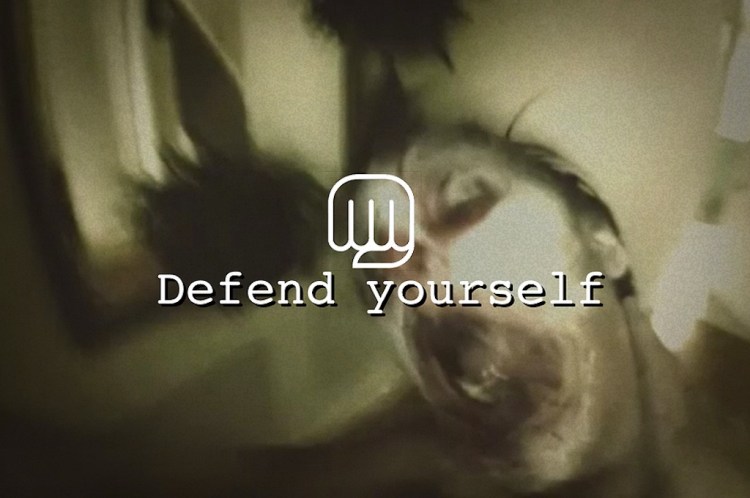
Above: The undead can be so handsy.
GamesBeat: So do you still film with an iPhone, or do you have dedicated cameras for your other stuff?
Plenderleith: We’re working on a film right now called Camera 6, which is a feature. It’s a high-concept horror thriller about a serial killer on a holiday resort who is murdering people who happen to catch his image on film. He believes that if his image is captured on film, they take a part of his soul away. So it’s a very dark, twisted film. It’s called “Camera 6” because the footage is taken from six cameras. The police who investigated this have no footage on the holiday resort, which is very common because most holiday resorts aren’t allowed to have security cameras pointing at swimming pools because of privacy laws.
So basically the police confiscate all of the recording devices from everybody on the resort. And six of the cameras have important evidence and one of the cameras, Camera 6, is the killer’s camera. So two of those cameras are smart phones: One is an iPhone, and one is a Sony Android phone. One is a camcorder, one is a DSLR, one is a high-end TV broadcast one, and one is the killer’s, which is more like a GoPro. So Camera 6 is kind of taking what we learned in The Hunting and multiplying it by six really.
GamesBeat: So the answer to that is yes and no.
Plenderleith: Basically. Filming on an iPhone now, especially an iPhone 6, is absolutely possible. You can literally go out and film stuff, and people will not know. It’s all about the settings.
For instance, there is automatic exposure and focus, and you probably already know if you hold the screen, you can fix that. As soon as you fix that, it looks like a real movie. If you don’t, it’s always focusing on the person in the screen or the tree in the background, depending on where you’re pointing it. Same on the auto exposure. So things like that, very basic things, if you fix your exposure, immediately it’ll look like a proper film.
I do find the quality of an iPhone superb. The thing is that if you try to film on a high-end camera and try to make it look like an iPhone, then it just looks like a high-end camera that’s been downgraded.
It’s not actually the quality of the picture, it’s the movement that’s important. If you’re a cameraman with a massive camera and a shoulder strap, you can’t move the same way as a person who has a phone in their hand moves. It’s all much quicker, much faster, much more erratic and all over the place, and that’s realistic. He literally cannot emulate that movement with a big camera, I don’t think. So if you’re gonna shoot stuff that looks like it was shot on an iPhone, shoot it on an iPhone. That’s the simplest way to do it. They’re all HD now, they’re all super quality. Super good lenses.
You can get away with a lot on an iPhone — unless it’s dark. If it’s dark, you’re in trouble. I would say, that’s why I didn’t shoot any of The Hunting in the dark. We did a few tests and it was just dreadful. Very grainy, pixelated. Unusable, really. We needed a proper high end camera. So that’s why it’s all during the day.
You can find The Hunting (Parts One, Two, and Three) in the iOS App Store. Learn more about Allan’s film projects at his website.
VentureBeat's mission is to be a digital town square for technical decision-makers to gain knowledge about transformative enterprise technology and transact. Learn More

